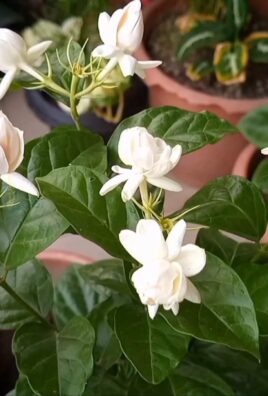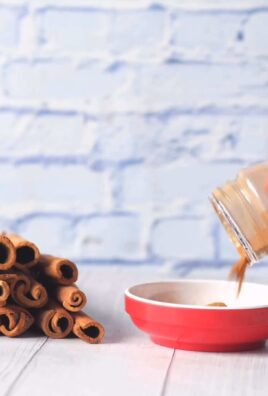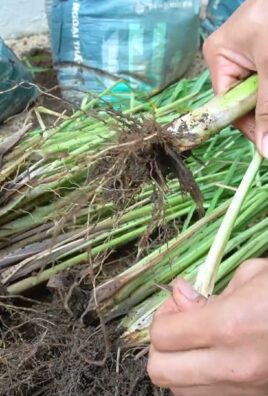Container gardening lettuce: sounds like a delicious and achievable dream, right? I’m here to tell you it absolutely is! Forget acres of land and back-breaking labor. Imagine stepping onto your balcony or patio and harvesting fresh, crisp lettuce leaves for your salad, sandwich, or even a healthy smoothie. That’s the power of container gardening!
Growing lettuce in containers isn’t just a modern trend; it’s a revival of ancient practices. Throughout history, people have cultivated edible plants in pots and raised beds, adapting to limited spaces and urban environments. From the hanging gardens of Babylon to the window boxes of Victorian England, the desire to nurture and harvest our own food has always been a part of the human experience.
But why should you embrace container gardening lettuce? Well, in today’s fast-paced world, knowing exactly where your food comes from is more important than ever. Store-bought lettuce can be expensive, and often lacks the vibrant flavor of freshly picked greens. Plus, you have complete control over the growing process, ensuring your lettuce is free from harmful pesticides and chemicals. This DIY guide will provide you with simple, effective tricks and hacks to successfully grow your own thriving lettuce patch, even if you’ve never gardened before. I’ll walk you through everything from choosing the right container and soil to preventing common problems and harvesting your bounty. Get ready to enjoy the freshest, most delicious lettuce you’ve ever tasted!

Container Gardening: Grow Your Own Delicious Lettuce!
Hey there, fellow gardening enthusiasts! I’m so excited to share my guide to growing your own lettuce in containers. It’s easier than you think, and nothing beats the taste of fresh, homegrown lettuce in your salads and sandwiches. Plus, container gardening is perfect if you have limited space, like an apartment balcony or a small patio. Let’s get started!
Choosing the Right Container and Soil
Before we dive into planting, let’s talk about the essentials: the container and the soil. These are crucial for healthy lettuce growth.
* Container Size: Lettuce doesn’t need a super deep container because its roots are relatively shallow. A container that’s at least 6 inches deep and 12 inches wide is a good starting point. I personally love using rectangular planters, as they allow me to grow a good amount of lettuce in a compact space. You can also use individual pots for each lettuce plant, especially if you want to grow different varieties.
* Drainage: This is non-negotiable! Make sure your container has drainage holes. Lettuce hates sitting in soggy soil, which can lead to root rot. If your container doesn’t have drainage holes, you can drill some yourself.
* Material: The material of your container is mostly a matter of personal preference. Plastic, terracotta, ceramic, and even repurposed containers like old buckets or tubs can work. Just make sure whatever you choose is clean and food-safe if you’re using a recycled container.
* Potting Mix: Don’t use garden soil in your containers! It’s too heavy and doesn’t drain well. Instead, opt for a high-quality potting mix specifically designed for containers. I like to use a mix that contains peat moss, perlite, and vermiculite. This combination provides good drainage, aeration, and moisture retention. You can also add some compost to the mix for extra nutrients.
Selecting Your Lettuce Varieties
One of the best things about growing lettuce is the variety! There are so many different types to choose from, each with its own unique flavor, texture, and appearance.
* Loose-Leaf Lettuce: This is the easiest type to grow and harvest. The leaves grow in a loose bunch, and you can harvest them individually as needed. Some popular loose-leaf varieties include ‘Black Seeded Simpson,’ ‘Red Sails,’ and ‘Oak Leaf.’
* Butterhead Lettuce: Butterhead lettuce forms a loose head with soft, buttery leaves. ‘Buttercrunch’ and ‘Bibb’ are two well-known butterhead varieties.
* Romaine Lettuce: Romaine lettuce has long, upright leaves and a crisp texture. It’s a classic choice for Caesar salads. ‘Paris Island Cos’ and ‘Dark Green Romaine’ are good options.
* Crisphead Lettuce: Crisphead lettuce, like iceberg, is the most challenging to grow in containers. It requires consistent moisture and cool temperatures. I generally recommend sticking to the other types of lettuce for container gardening.
When choosing your lettuce varieties, consider your climate and the amount of sunlight your container will receive. Some varieties are more heat-tolerant than others. Also, think about what kind of lettuce you enjoy eating!
Planting Your Lettuce
Now for the fun part: planting! You can start lettuce from seeds or purchase seedlings from a garden center. I’ve done both, and both methods work well.
Starting from Seeds:
1. Prepare the Soil: Fill your container with potting mix, leaving about an inch of space at the top. Gently moisten the soil with water.
2. Sow the Seeds: Sprinkle the lettuce seeds evenly over the surface of the soil. Lettuce seeds are tiny, so don’t bury them too deep. A light dusting of soil is all they need.
3. Water Gently: Use a spray bottle or a watering can with a gentle rose to water the seeds. Be careful not to wash the seeds away.
4. Cover the Container: Cover the container with a clear plastic bag or a humidity dome to create a greenhouse effect. This will help keep the soil moist and promote germination.
5. Place in a Sunny Location: Place the container in a sunny location that receives at least 6 hours of sunlight per day.
6. Monitor Moisture: Check the soil moisture daily and water as needed to keep it consistently moist.
7. Remove the Cover: Once the seeds germinate (usually within 7-14 days), remove the plastic bag or humidity dome.
8. Thin Seedlings: Once the seedlings have a few true leaves, thin them out so that they are spaced about 4-6 inches apart. This will give them enough room to grow.
Planting Seedlings:
1. Prepare the Soil: Fill your container with potting mix, leaving about an inch of space at the top. Gently moisten the soil with water.
2. Dig Holes: Dig holes in the soil that are large enough to accommodate the root balls of the seedlings. Space the holes about 4-6 inches apart.
3. Remove Seedlings from Pots: Gently remove the seedlings from their pots, being careful not to damage the roots.
4. Place Seedlings in Holes: Place the seedlings in the holes and gently backfill with soil.
5. Water Thoroughly: Water the seedlings thoroughly after planting.
Caring for Your Lettuce
Lettuce is relatively easy to care for, but there are a few things you need to keep in mind to ensure a bountiful harvest.
* Watering: Lettuce needs consistent moisture to thrive. Water your lettuce regularly, especially during hot, dry weather. Check the soil moisture daily and water when the top inch of soil feels dry to the touch. Avoid overwatering, as this can lead to root rot.
* Sunlight: Lettuce needs at least 6 hours of sunlight per day. Place your container in a sunny location. If you live in a hot climate, you may need to provide some afternoon shade to prevent the lettuce from bolting (going to seed).
* Fertilizing: Lettuce is a light feeder, but it will benefit from regular fertilization. Use a balanced liquid fertilizer diluted to half strength every 2-3 weeks. You can also add some compost tea to the soil for extra nutrients.
* Weeding: Keep your container free of weeds. Weeds compete with lettuce for nutrients and water.
* Pest Control: Lettuce is susceptible to a few common pests, such as aphids, slugs, and snails. Inspect your plants regularly for signs of pests. You can control aphids with a strong spray of water or by using insecticidal soap. Slugs and snails can be handpicked or trapped.
Harvesting Your Lettuce
The best part of growing your own lettuce is, of course, harvesting it! You can start harvesting lettuce as soon as the leaves are large enough to eat.
* Loose-Leaf Lettuce: Harvest loose-leaf lettuce by snipping off the outer leaves with scissors or a knife. Leave the inner leaves to continue growing. This is called “cut-and-come-again” harvesting.
* Butterhead and Romaine Lettuce: Harvest butterhead and romaine lettuce when the heads are firm and well-formed. Cut the entire head off at the base.
* Harvesting Time: Harvest lettuce in the morning, when the leaves are crisp and cool.
* Storage: Store harvested lettuce in the refrigerator in a plastic bag or container. It will keep for several days.
Troubleshooting
Even with the best care, you may encounter some problems when growing lettuce. Here are a few common issues and how to address them:
* Bolting: Bolting is when lettuce goes to seed. This is usually caused by hot weather or stress. To prevent bolting, provide shade during the hottest part of the day and water regularly. Choose heat-tolerant varieties.
* Yellowing Leaves: Yellowing leaves can be caused by overwatering, underwatering, or nutrient deficiencies. Check the soil moisture and adjust your watering accordingly. Fertilize regularly with a balanced fertilizer.
* Pests: As mentioned earlier, lettuce is susceptible to aphids, slugs, and snails. Inspect your plants regularly and take action to control pests as needed.
* Root Rot: Root rot is caused by overwatering and poor drainage. Make sure your container has drainage holes and avoid overwatering.
Enjoy Your Homegrown Lettuce!
That’s it! You’re now equipped with the knowledge to grow your own delicious lettuce in containers. With a little care and attention, you’ll be enjoying fresh, homegrown salads in no time. Happy gardening!

Conclusion
So, there you have it! Growing your own lettuce in containers is not only achievable, but it’s also incredibly rewarding. Forget those limp, overpriced greens from the grocery store. With this simple DIY trick, you can have a constant supply of fresh, crisp lettuce right outside your door, or even on your balcony. This method is a game-changer, especially if you’re short on space or just starting out with gardening.
Why is this a must-try? Think about it: you control the soil, the sunlight, and the watering, minimizing the risk of pests and diseases that can plague in-ground gardens. Plus, the convenience factor is unbeatable. Imagine snipping off exactly the amount of lettuce you need for a salad, sandwich, or wrap, just moments before you eat it. The flavor is unparalleled – a vibrant, fresh taste that you simply can’t get from store-bought lettuce that has been sitting in a truck and on shelves for days.
But the benefits don’t stop there. Container gardening lettuce is also a fantastic way to reduce your carbon footprint. By growing your own food, you’re cutting down on transportation emissions and supporting a more sustainable lifestyle. It’s a small change that can make a big difference.
Ready to take your container gardening lettuce to the next level? Here are a few suggestions and variations to consider:
* Mix and Match Varieties: Don’t limit yourself to just one type of lettuce. Experiment with different varieties like romaine, butterhead, loose-leaf, and even mesclun mixes. Each variety offers a unique flavor and texture, adding variety to your salads.
* Succession Planting: To ensure a continuous harvest, sow new seeds every two to three weeks. This way, you’ll always have young, tender lettuce ready to pick.
* Companion Planting: Plant your lettuce alongside other beneficial herbs and vegetables. Marigolds can deter pests, while basil can improve the flavor of your lettuce.
* Vertical Gardening: If you’re really short on space, consider using a vertical planter. This allows you to grow even more lettuce in a small area.
* Get the Kids Involved: Container gardening is a great way to teach children about where their food comes from and encourage them to eat more vegetables.
We’re confident that once you try this DIY trick, you’ll be hooked. It’s easy, affordable, and incredibly satisfying. So, grab a container, some soil, and some lettuce seeds, and get started today!
We can’t wait to hear about your experience. Share your photos and tips on social media using #ContainerLettuceSuccess. Let’s inspire others to grow their own food and enjoy the delicious rewards of container gardening lettuce!
Frequently Asked Questions (FAQ)
What kind of container is best for growing lettuce?
Almost any container with drainage holes will work for growing lettuce. The size of the container depends on the variety of lettuce you’re growing. For loose-leaf varieties, a container that is at least 6 inches deep and wide is sufficient. For head lettuce varieties like romaine, you’ll need a larger container, at least 12 inches deep and wide. Consider using plastic pots, terracotta pots, or even repurposed containers like buckets or tubs. Just make sure the container is clean and has adequate drainage to prevent waterlogging.
What type of soil should I use for container gardening lettuce?
Lettuce prefers well-draining, fertile soil. A good quality potting mix is ideal for container gardening. Avoid using garden soil, as it can be too heavy and compact in containers, hindering drainage and root growth. You can also amend your potting mix with compost or other organic matter to improve its fertility and water retention. A slightly acidic to neutral pH (around 6.0 to 7.0) is best for lettuce.
How much sunlight does lettuce need?
Lettuce needs at least 4-6 hours of sunlight per day. However, in hot climates, it’s best to provide some afternoon shade to prevent the leaves from wilting or becoming bitter. A location that receives morning sun and afternoon shade is ideal. If you don’t have a sunny spot, you can also grow lettuce under grow lights.
How often should I water my container lettuce?
Lettuce needs consistent moisture to thrive. Water your container lettuce whenever the top inch of soil feels dry to the touch. Avoid overwatering, as this can lead to root rot. Water deeply, allowing the water to drain out of the drainage holes. During hot weather, you may need to water more frequently.
How do I fertilize my container lettuce?
Lettuce is a relatively light feeder, but it still benefits from regular fertilization. You can use a balanced liquid fertilizer diluted to half strength every two to three weeks. Alternatively, you can incorporate slow-release fertilizer granules into the potting mix at planting time. Avoid over-fertilizing, as this can lead to leggy growth and bitter-tasting leaves.
When is the best time to harvest lettuce?
You can start harvesting lettuce leaves as soon as they are large enough to eat. For loose-leaf varieties, you can harvest individual leaves as needed, allowing the plant to continue growing. For head lettuce varieties, wait until the head is firm and well-formed before harvesting. To harvest, simply cut the leaves or head off at the base of the plant.
How do I prevent pests and diseases in my container lettuce?
Container gardening can help minimize pest and disease problems, but it’s still important to take precautions. Inspect your plants regularly for signs of pests or diseases. Common pests of lettuce include aphids, slugs, and snails. You can control these pests by handpicking them off the plants, using insecticidal soap, or setting up traps. Diseases like powdery mildew and downy mildew can be prevented by providing good air circulation and avoiding overwatering.
Can I grow lettuce indoors?
Yes, you can grow lettuce indoors, especially during the colder months. You’ll need to provide adequate light, either from a sunny window or grow lights. Choose a compact variety of lettuce that is well-suited for indoor growing. Make sure to provide good air circulation and avoid overwatering.
What are some common problems when growing container lettuce and how do I fix them?
Some common problems include:
* Bolting (premature flowering): This can happen when lettuce is exposed to high temperatures or long days. To prevent bolting, provide shade during the hottest part of the day and choose bolt-resistant varieties.
* Bitter taste: This can be caused by heat stress, lack of water, or over-fertilizing. Provide adequate water and shade, and avoid over-fertilizing.
* Yellowing leaves: This can be caused by nutrient deficiencies, overwatering, or underwatering. Check the soil moisture and fertilize as needed.
* Pest infestations: Regularly inspect your plants for pests and take action as needed.
Can I regrow lettuce from a stem?
Yes, you can attempt to regrow lettuce from the stem, although success isn’t always guaranteed. Place the lettuce stem in a shallow dish of water, ensuring the bottom is submerged but the top is exposed. Change the water every day or two. After a few days, you may see new roots and leaves starting to grow. Once the roots are well-developed, you can transplant the stem into a pot of soil. While this method can work, the resulting lettuce plant may not be as robust or productive as one grown from seed. It’s a fun experiment, though!





Leave a Comment